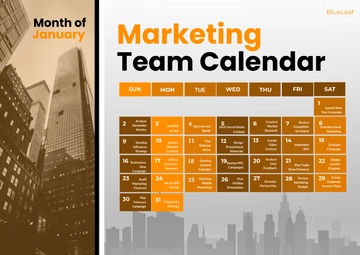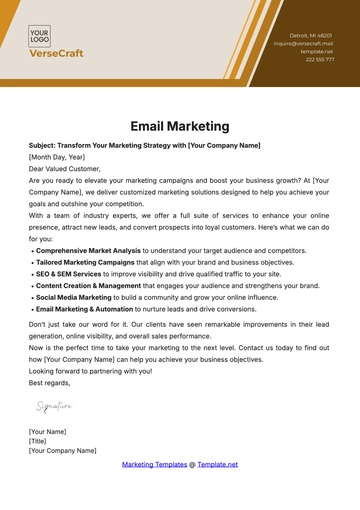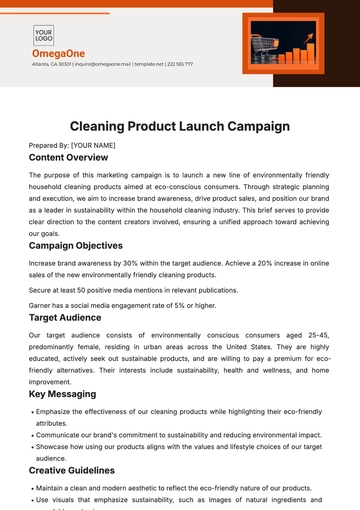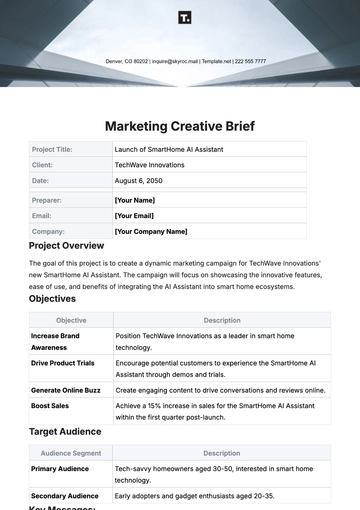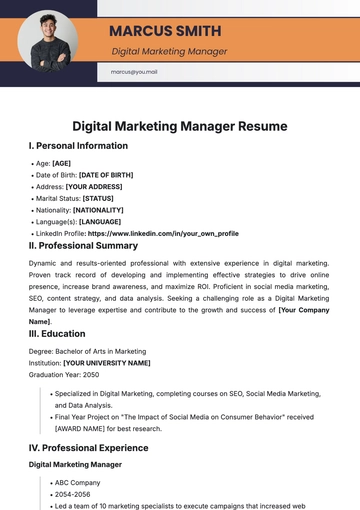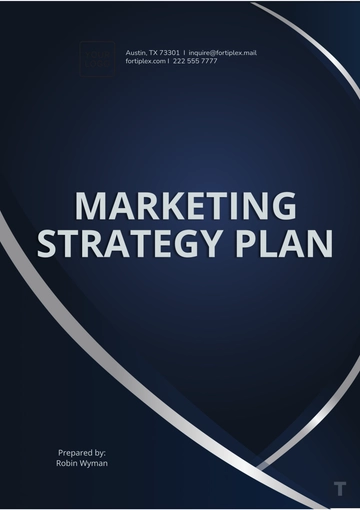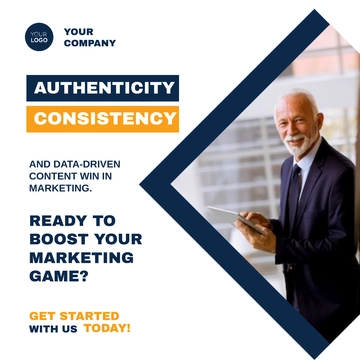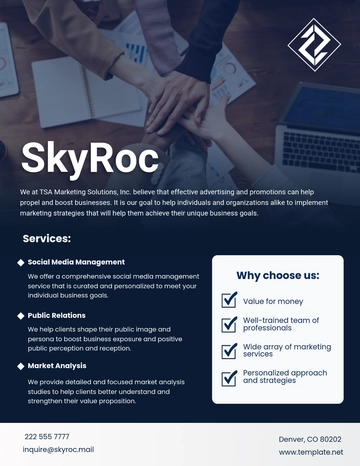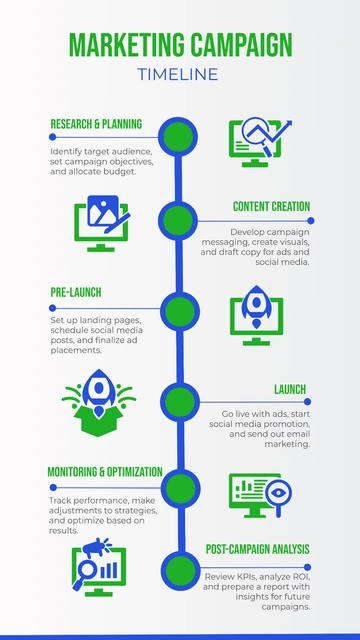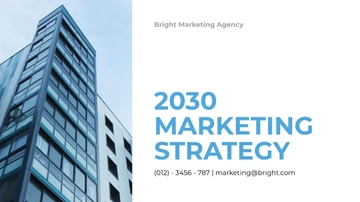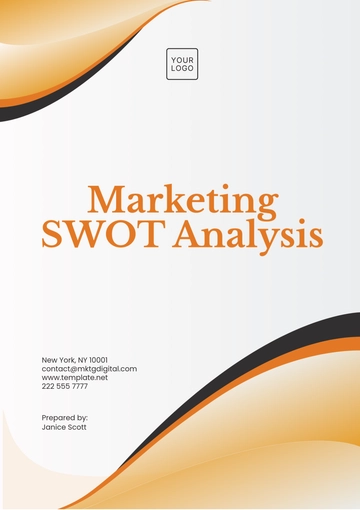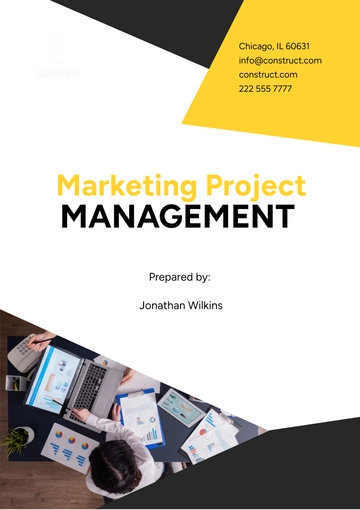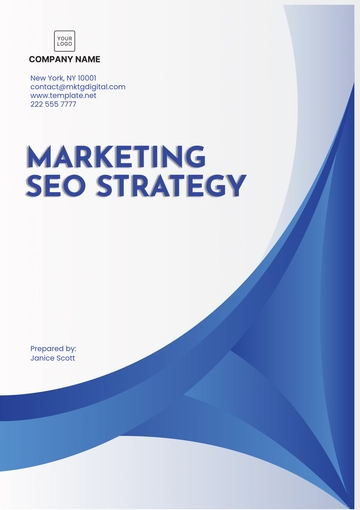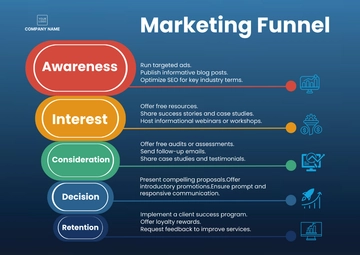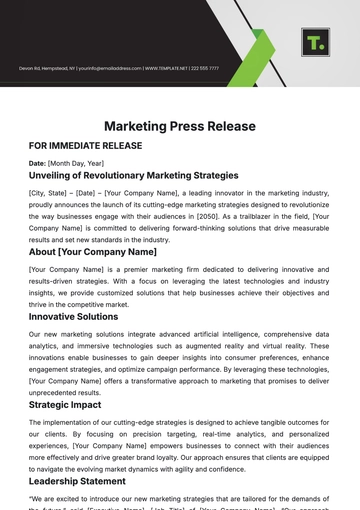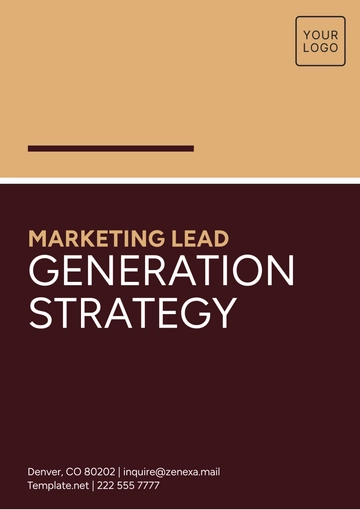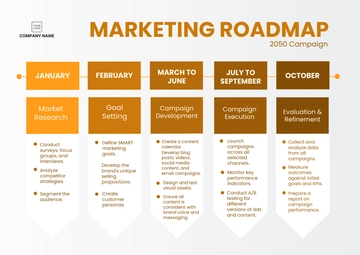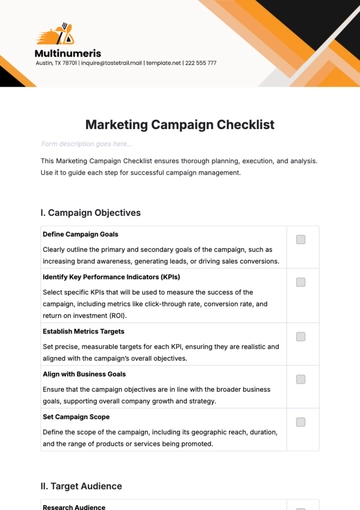Free Advertising Campaign Strategy Guide
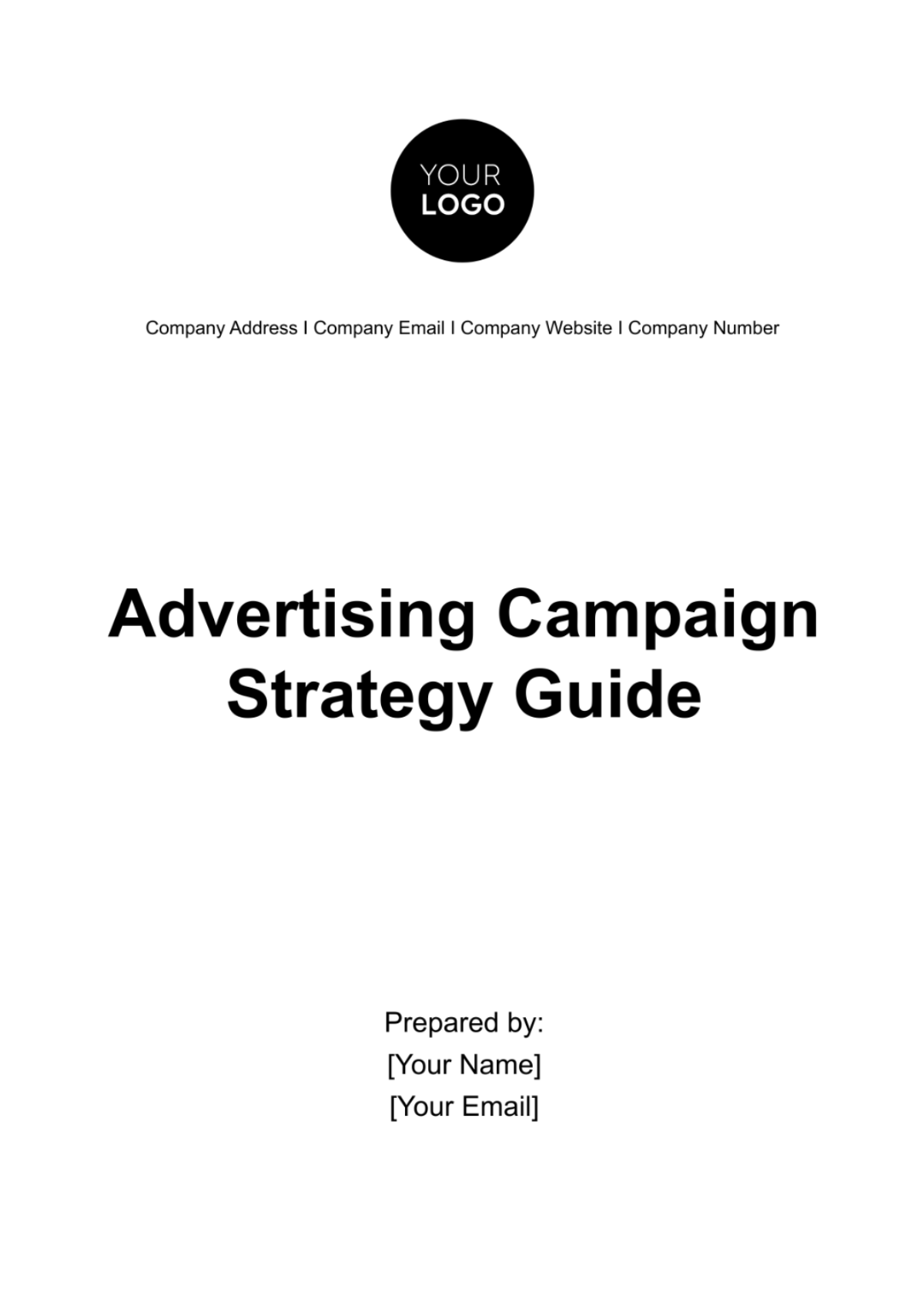
I. Introduction
In today's ever-changing advertising landscape, where innovation and adaptability are key, developing a robust and effective campaign strategy is essential. This guide, prepared by [Your Company Name], provides a comprehensive overview of how to craft and execute a successful advertising campaign. From the initial stages of market research to the final steps of campaign analysis, this guide covers all the essential strategies and steps, offering valuable insights and methodologies specifically tailored for advertising professionals.
This guide is meticulously prepared to provide a detailed roadmap, encompassing every critical aspect of campaign development. It begins with the foundational step of in-depth market research, aimed at gaining a nuanced understanding of the target audience and the competitive landscape. This is followed by the strategic formulation of campaign goals, aligning with the overarching objectives of the business and ensuring that every initiative is measurable, achievable, and impactful.
Furthermore, the guide delves into the intricacies of budget allocation, creative conceptualization, media planning, and execution. Each section is designed to offer actionable insights and proven methodologies, tailored to meet the needs of advertising professionals. From the creative spark of concept development to the rigorous analysis of campaign outcomes, this guide covers the full spectrum of advertising strategy.
In essence, this Advertising Campaign Strategy Guide is not just a set of instructions; it is a comprehensive toolkit, designed to empower [Your Company Name] and its advertising team to craft campaigns that not only capture the audience's imagination but also deliver tangible results in an increasingly competitive marketplace.
II. Campaign Strategy Development
The foundation of any successful advertising campaign lies in its strategy development, a critical phase where a deep understanding of the market and the target audience is established. This chapter outlines the process of Campaign Strategy Development for [Your Company Name], focusing on comprehensive Market Research and Analysis. By methodically dissecting audience demographics, preferences, and behaviors, we set the stage for a campaign that is not only creative but also resonates deeply with its intended audience.
Aspect | Description | Details |
|---|---|---|
Objective | Understand the target market, audience demographics, preferences, and behaviors | The primary goal is to gain a deep understanding of the audience to ensure campaign messages resonate effectively. |
Rationale | Importance of audience connection | Effective campaigns hinge on a strong connection with the target audience, making knowledge of their preferences and behaviors crucial. |
Approach | Variety of research methods | Utilizing surveys, focus groups, and market data analysis to gather comprehensive insights into audience characteristics and market trends. |
Expected Outcome | Comprehensive market report | Producing a detailed report encompassing demographics, psychographics, and behavioral patterns of the target audience. |
Method | Surveys, focus groups, market data analysis |
|
Outcome | Detailed understanding of audience and market |
|
The Campaign Strategy Development phase is pivotal in setting the direction for an effective and impactful advertising campaign. By thoroughly understanding our audience and the market, [Your Company Name] is well-equipped to create campaigns that not only capture attention but also drive meaningful engagement and results.
III. Defining Campaign Goals
Setting clear and measurable goals is a fundamental step in the campaign planning process. This chapter outlines how [Your Company Name] approaches the critical task of defining goals for advertising campaigns. By aligning these goals with the broader objectives of the business and ensuring they are specific, measurable, achievable, relevant, and time-bound (SMART), we lay the groundwork for a campaign that is strategically sound and poised for success.
Aspect | Description | Details |
|---|---|---|
Objective | Set clear, measurable objectives for the campaign | Establishing concrete goals that guide the direction and focus of the campaign. |
Method | Align goals with business objectives | Ensuring that campaign goals are in harmony with the overall business objectives, such as enhancing brand awareness, generating leads, or increasing sales. |
Outcome | SMART goals | Developing goals that are specific, measurable, achievable, relevant, and time-bound, providing a clear benchmark for success and enabling effective measurement and evaluation of campaign performance. |
Through this structured approach to defining campaign goals, [Your Company Name] ensures that each advertising campaign is strategically designed to meet specific objectives, contributing to the broader aims of the business and maximizing the campaign's potential for success.
IV. Budget Planning
Effective allocation of financial resources is crucial in advertising, where budget constraints often dictate the scope and reach of a campaign. This chapter on Budget Planning highlights how [Your Company Name] methodically approaches the financial planning of advertising campaigns. We focus on estimating costs while considering the campaign's scope, duration, and chosen media channels, and we emphasize the importance of including contingencies in our budgeting to ensure flexibility and preparedness for unexpected expenses.
Aspect | Description | Details |
|---|---|---|
Objective | Allocate financial resources effectively | Efficient and strategic distribution of the budget to maximize the impact of the campaign. |
Method | Cost estimation based on scope, duration, and channels | Budgeting involves assessing the financial requirements based on the campaign's scale, duration, and the selected advertising channels, ensuring comprehensive coverage of all costs. |
Outcome | Detailed budget plan | Creation of a budget plan that balances cost-effectiveness with the objectives of the campaign. The plan includes a detailed breakdown of all costs, including contingencies, providing a clear financial roadmap for the campaign. |
Through careful Budget Planning, [Your Company Name] ensures that each campaign is financially feasible and set up for success. By balancing cost-effectiveness with campaign goals, we not only optimize resource allocation but also provide a solid foundation for achieving desired outcomes within the set budget constraints.
V. Campaign Concept and Creative Development
The heart of any advertising campaign lies in its concept and creative execution. In this crucial phase, [Your Company Name] focuses on developing a campaign concept that is not only compelling and creative but also resonates deeply with the target audience. This chapter outlines the process of ideation and creative development, emphasizing the collaborative efforts and innovative approaches we employ to ensure the campaign's concept is both engaging and effective.
Aspect | Description | Details |
|---|---|---|
Objective | Develop a compelling and creative concept | Crafting a campaign concept that captivates the target audience and effectively communicates the campaign's message. |
Method | Brainstorming sessions, creative workshops, and collaboration | Utilizing a blend of brainstorming sessions and creative workshops to foster innovative ideas. Collaboration with creative teams, including copywriters, designers, and strategists, to refine and enhance the concept. |
Outcome | Innovative and engaging campaign concept with clear messaging | The result is a creative and strategically sound campaign concept. This concept not only aligns with the campaign's goals but also stands out in the competitive advertising landscape, ensuring clear and impactful messaging. |
Through this structured approach to concept and creative development, [Your Company Name] ensures that the core of each campaign is imaginative, strategically aligned, and poised to make a meaningful connection with the audience. This phase is pivotal in setting the tone and direction for all subsequent campaign elements, from media execution to performance measurement.
VI. Media Planning and Buying
Media Planning and Buying is a critical stage in the advertising process, where decisions are made about how and where to place the campaign for maximum impact. This chapter focuses on how [Your Company Name] strategically selects and secures media channels to ensure the advertising message reaches the intended audience effectively. Through careful analysis of various media options and their alignment with campaign goals and audience demographics, we formulate a media plan that optimizes reach and frequency while staying within budget.
Aspect | Description | Details |
|---|---|---|
Objective | Determine the most effective channels for message dissemination | Selecting the right media channels to ensure the campaign reaches its target audience effectively. |
Method | Analyze media options considering reach, frequency, and audience alignment | Evaluating various media options, including digital, print, broadcast, and social media, based on their potential to reach the target audience. Considerations include the reach of each medium, the frequency of exposure, and how well the audience aligns with the medium. |
Outcome | Strategic media plan | Developing a comprehensive media plan that outlines the selected channels, scheduling of the campaign across these channels, and detailed budget allocation. This plan is designed to maximize the impact of the campaign within the set financial parameters. |
Through this methodical approach to Media Planning and Buying, [Your Company Name] ensures that each advertising campaign is optimally positioned for success. The strategic selection of media channels is instrumental in delivering the campaign's message to the right audience at the right time, significantly enhancing the campaign's overall effectiveness.
VII. Campaign Execution
Campaign Execution is the phase where strategic planning materializes into action. For [Your Company Name], this step is about bringing the campaign to life, ensuring that all elements are implemented effectively across the chosen channels. This chapter details the process of executing the campaign, highlighting the coordination efforts, launch strategies, and the management of production and distribution to achieve a seamless and impactful campaign rollout.
Aspect | Description | Details |
|---|---|---|
Objective | Implement the campaign across selected channels | Ensuring the campaign is effectively launched and visible in the chosen media channels. |
Method | Coordinate with media outlets, launch digital campaigns, oversee production and distribution |
|
Outcome | Smooth and timely rollout of the campaign | Achieving an efficient rollout that adheres to the planned schedule and budget, ensuring all campaign elements are launched cohesively and effectively. |
With this Campaign Execution, [Your Company Name] ensures that every aspect of the campaign is implemented with precision and efficiency. By maintaining close coordination with media partners, meticulously managing the digital launch, and overseeing production and distribution processes, we ensure a successful and impactful delivery of the campaign to the target audience.
VIII. Monitoring and Optimization
The ability to adapt and refine a campaign in real time is crucial in the ever-evolving advertising landscape. In this critical phase, [Your Company Name] focuses on Monitoring and Optimization, ensuring that the campaign not only resonates with the audience but also achieves the set objectives. This chapter outlines our approach to tracking campaign performance and making the necessary adjustments to optimize outcomes.
Aspect | Description | Details |
|---|---|---|
Objective | Track campaign performance and make necessary adjustments | Continuously assessing the campaign's performance to ensure it meets or exceeds the set goals. |
Method | Use analytics tools to monitor key performance indicators (KPIs) | Employing advanced analytics tools to track various KPIs such as engagement rates, click-through rates, conversion rates, and ROI. These tools provide real-time data, allowing for quick identification of areas that need adjustment. |
Outcome | Ongoing optimization of the campaign for maximum impact | Regular analysis of performance data to make informed decisions on optimizing various aspects of the campaign. This might include adjusting the messaging, reallocating budget to more effective channels, or refining targeting strategies. The goal is to enhance the campaign's effectiveness continuously throughout its duration. |
Through diligent Monitoring and Optimization, [Your Company Name] ensures that each campaign is not just a static set of advertisements but a dynamic and evolving strategy tailored to achieve the best possible results. By leveraging real-time data and insights, we can make informed decisions that enhance campaign performance and maximize impact.
IX. Post-Campaign Analysis and Reporting
After the conclusion of an advertising campaign, it is crucial to evaluate its overall performance and impact. In this phase, [Your Company Name] focuses on Post-Campaign Analysis and Reporting, a process that not only measures the success of the campaign against its initial objectives but also provides vital insights for future advertising strategies. This chapter outlines our approach to dissecting campaign data, gathering feedback, and compiling findings into comprehensive reports.
Aspect | Description | Details |
|---|---|---|
Objective | Evaluate the campaign's effectiveness and gather insights for future campaigns | Assessing how well the campaign met its goals and what can be learned for future initiatives. |
Method | Analyze data against initial objectives, gather feedback, and prepare comprehensive reports |
|
Outcome | Detailed insights into campaign performance, lessons learned, and recommendations for future campaigns | Producing a holistic view of the campaign's performance, including key metrics, audience reception, and ROI. The reports will also offer actionable recommendations and strategic learnings that can be applied to enhance the effectiveness of future campaigns. |
The Post-Campaign Analysis and Reporting phase is crucial for [Your Company Name] to continually refine our advertising strategies. By thoroughly evaluating each campaign, we gain valuable insights that inform our future work, ensuring that we are not only meeting but exceeding our clients' expectations and adapting to the ever-changing advertising landscape.
X. Conclusion
This Advertising Campaign Strategy Guide serves as a roadmap for [Your Company Name] to navigate the complexities of modern advertising campaigns. By following these strategic steps and maintaining flexibility to adapt to market changes, [Your Company Name] can consistently deliver successful advertising campaigns that resonate with audiences and achieve desired business outcomes.
- 100% Customizable, free editor
- Access 1 Million+ Templates, photo’s & graphics
- Download or share as a template
- Click and replace photos, graphics, text, backgrounds
- Resize, crop, AI write & more
- Access advanced editor
Maximize your campaign's impact with Template.net's editable Advertising Campaign Strategy Guide Template. Expertly designed for advertising professionals, this template offers a structured approach to planning, executing, and analyzing campaigns. Customizable via our AI Editor Tool, this template is an indispensable tool for crafting successful advertising strategies that resonate with audiences and achieve business goals.
You may also like
- Marketing Google Slide
- Marketing Letter
- Marketing Quotation
- Marketing Report
- Marketing Strategic Plan
- Marketing Plan
- Marketing Proposal
- Marketing Flyer
- Marketing Presentation
- Real Estate Marketing Plan
- Marketing Contract
- Marketing Agreement
- Marketing Resume
- Marketing Checklist
- Marketing Brochure
- Marketing Banner
- Marketing Schedule
- Marketing Vector
- Marketing Logo
- Marketing Chart
- Marketing Campaign Plan
- Marketing Budget
- Marketing Postcard
- Marketing Poster
- Marketing Facebook Post
- Marketing Instagram Post
- Marketing Newsletter
- Marketing Infographic

